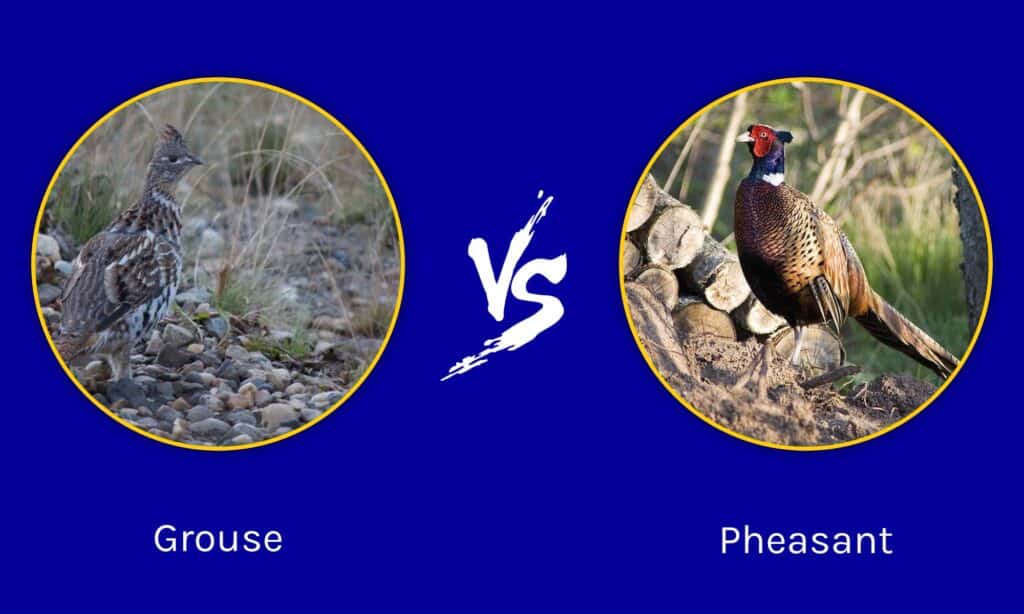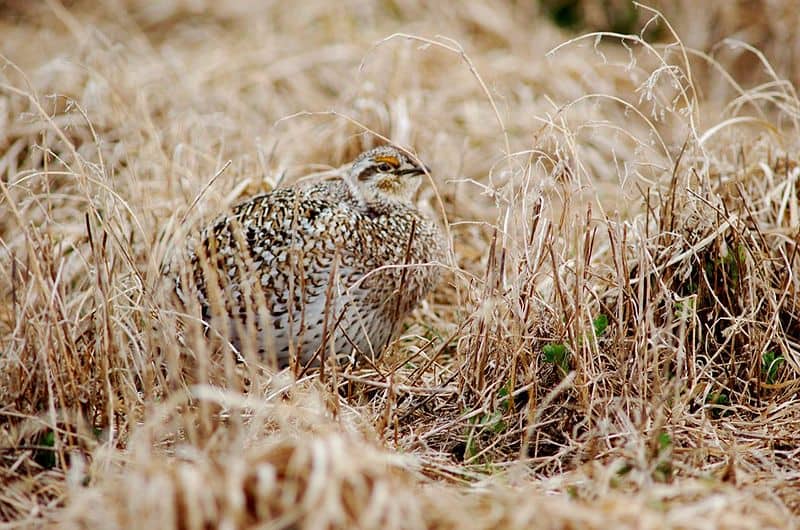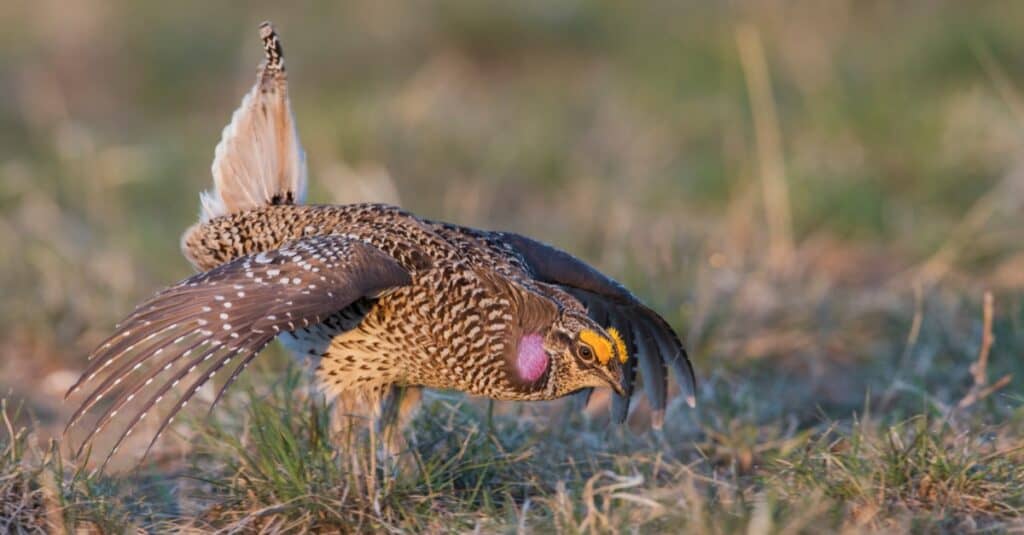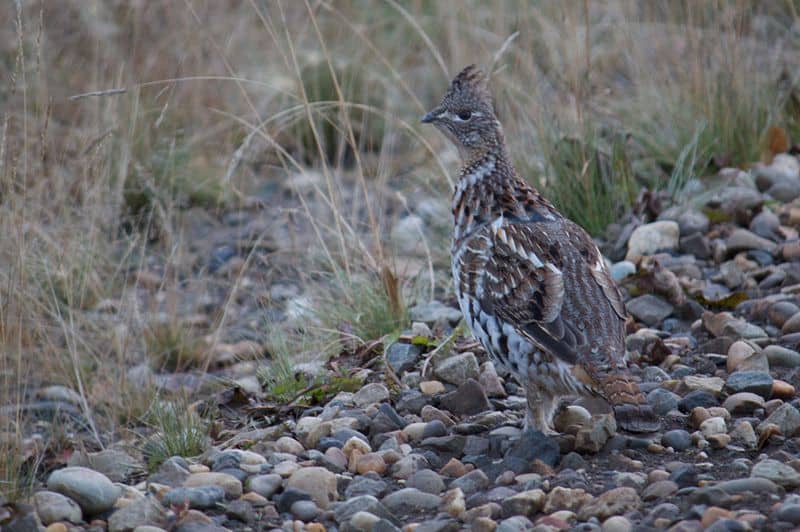In the world of game birds, things often tend to run together. What’s the difference between a quail, hen, pheasant, ptarmigan, and all the others? Well, today, we are going to find out. An entire comparison of every game bird would be too long. Instead, we will focus on two of the most common: the grouse and the pheasant. Although these birds have a lot of similarities, they aren’t quite the same. Let’s compare the grouse vs the pheasant and see what makes them unique!
Comparing a Grouse and a Pheasant

| Grouse | Pheasant | |
|---|---|---|
| Taxonomy | Subfamily: Phasianinae Genera: Tetraonini | Subfamily: Phasianinae Genera: Phasianini “Typical” pheasant genus: Phasianus |
| Size | Height: 12-37.6 in Weight: .75-14.25 lbs | Height: 23-35 in Weight: 1-7 lbs |
| Color | Depends on the species, but usually brown, black, and white. | Gold or copper plumage. Green or purple neck with a red head. |
| Distribution | Temperate and subarctic regions in the Northern Hemisphere | Native to Asia but has since been introduced into most of the Northern Hemisphere. |
| Diet | buds, catkins, leaves, and twigs | Mostly seeds |
| As a game bird | Common game birds | Often semi-domesticated and released as game birds |
The Key Differences Between a Grouse and a Pheasant
The key differences between a grouse and a pheasant are taxonomy, appearance, distribution, and diet.
Understanding the differences between a grouse and a pheasant is tough, mostly because the words are used in reference to a single bird when scientifically, they are general terms for different groups of birds. Grouse, for example, encompasses ten distinct species with dozens of subspecies that live all over the world. Additionally, pheasants are broken down even further, with seven groups of pheasants and a further branching of the varying species.
To make matters simple, we will cover grouse as a group (since they are all relatively similar) and compare them to the “typical” pheasant group, but primarily the common pheasant that most people are familiar with.
Although these birds have more than a few similarities, there are still distinct differences between them. Let’s explore them in some more detail below!
Grouse vs Pheasant: Taxonomy

Grouse belong to the Tetraonini genera.
Understanding the scientific grouping between the birds is a great way to understand their similarities and differences. Both grouse and pheasants belong to the subfamily Phasianinae. Birds in this subfamily are generally heavy, ground-dwelling birds, both traits that grouse and pheasants share. Recent DNA evidence has encouraged scientists to break this subfamily into three groups, however. The grouse is currently classified in the Tetraonini genera (all by themselves), and pheasants are classified in the Phasianini genera, along with true partridges. Since Phasianini doesn’t encompass pheasants solely, we have broken them one step further into the Phasianus genus, otherwise known as “typical pheasants.” Typical pheasants include the common pheasant and the green pheasant and are usually what people refer to when they talk about pheasants, especially as game birds.
Grouse vs Pheasant: Size

The average pheasant is larger than most grouse species.
©gary noon, CC BY-SA 2.0, via Wikimedia Commons – License
Grouses can range in size, depending on their location and species. Most species weigh between .75 and 14.25 lbs, making the largest grouse larger than the average common pheasant. In terms of height (or length), most species are smaller than the pheasant, as pheasants have extremely long tails.
Pheasants are lighter than the largest grouse but are heavier than the average individual. They generally weigh between 1 and 7 lbs and measure 23-35 inches from head to tail. The tail of the pheasant is significantly longer than any species of grouse, however.
Grouse vs Pheasant: Color

Grouse are usually brown, black, and white.
©Danita Delimont/Shutterstock.com
Grouse rely on camouflage to hide from prey and are excellent at remaining unseen. As such, they aren’t nearly as colorful as most species of pheasant. Grouse generally come in shades of brown, black, and white, with some species having pops of red or orange on their head or neck.
Pheasants are known for being quite colorful. The common pheasant (the one most people are familiar with) is bright gold or copper and has iridescent blue and green feathers across its neck. Additionally, these birds usually have a bright red mask over both of their eyes. The other “typical” pheasant is the green pheasant. These birds have green bodies and brown-grey wings with the same red mask on their heads.
Grouse vs Pheasant: Distribution

Pheasants are native to Asia but have been introduced all over the world.
©Lars Karlsson, CC BY-SA 2.5, via Wikimedia Commons – License
Grouse are incredibly widespread across the Northern Hemisphere. They have massive populations in the Arctic and subarctic regions and are an essential prey source for lynx, fox, and birds of prey. Aside from their three tundra species, there are others that live across the various regions of the Hemisphere, including forest and prairie regions. Grouse can be found in North America and Europe.
The common pheasant is also widespread, but mostly due to European introduction. Pheasants are native to Asia but have been introduced to most of Europe, some parts of Africa, North America, Australia, and New Zealand. They prefer woodland, farmland, scrub, and wetlands.
Grouse vs Pheasant: Diet

Grouse get about 95% of their diet from vegetation.
All species of grouse have a diet that reflects their environment, but most get their food from the same sources. 95% of a grouse’s diet is made up of buds, catkins, leaves, and twigs. Part of what enables grouse to live so far north is their ability to break down tough vegetation, primarily conifer needles.
The common pheasant has a varied diet that also reflects the environment it happens to live in. This bird is generally known to eat insects, seeds, and leaves.
Grouse vs Pheasant: As a game bird

Grouse and pheasants are some of the most hunted game birds in the world.
©juliazara/Shutterstock.com
Both the grouse and the pheasant are widely known as game birds. The most common species of grouse hunted are ruffed grouse, spruce grouse, and sharp-tailed grouse.
Pheasants are hunted all over the world, but by far, the most common game species are the common pheasants. These birds are often bred, fed, and released in order to sustain hunting populations, especially in the United States.
The photo featured at the top of this post is © Maksym Gorpenyuk/Shutterstock.com
Thank you for reading! Have some feedback for us? Contact the AZ Animals editorial team.






